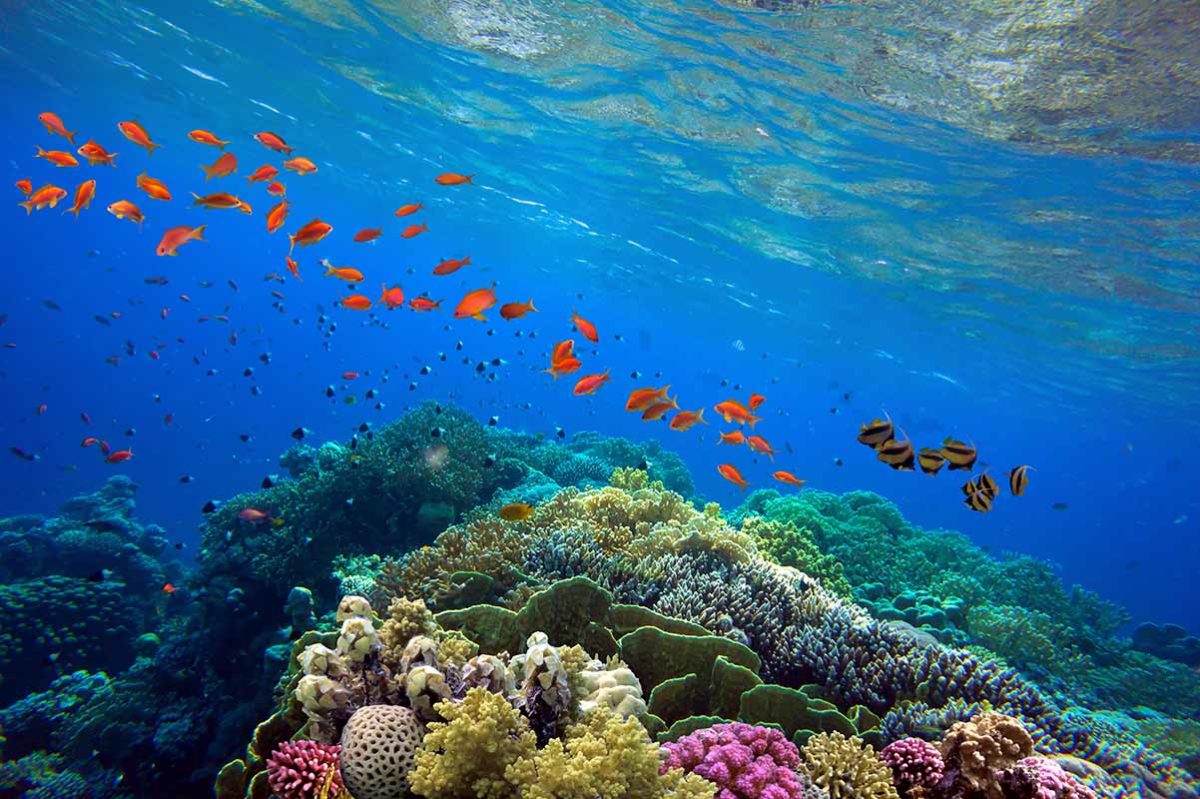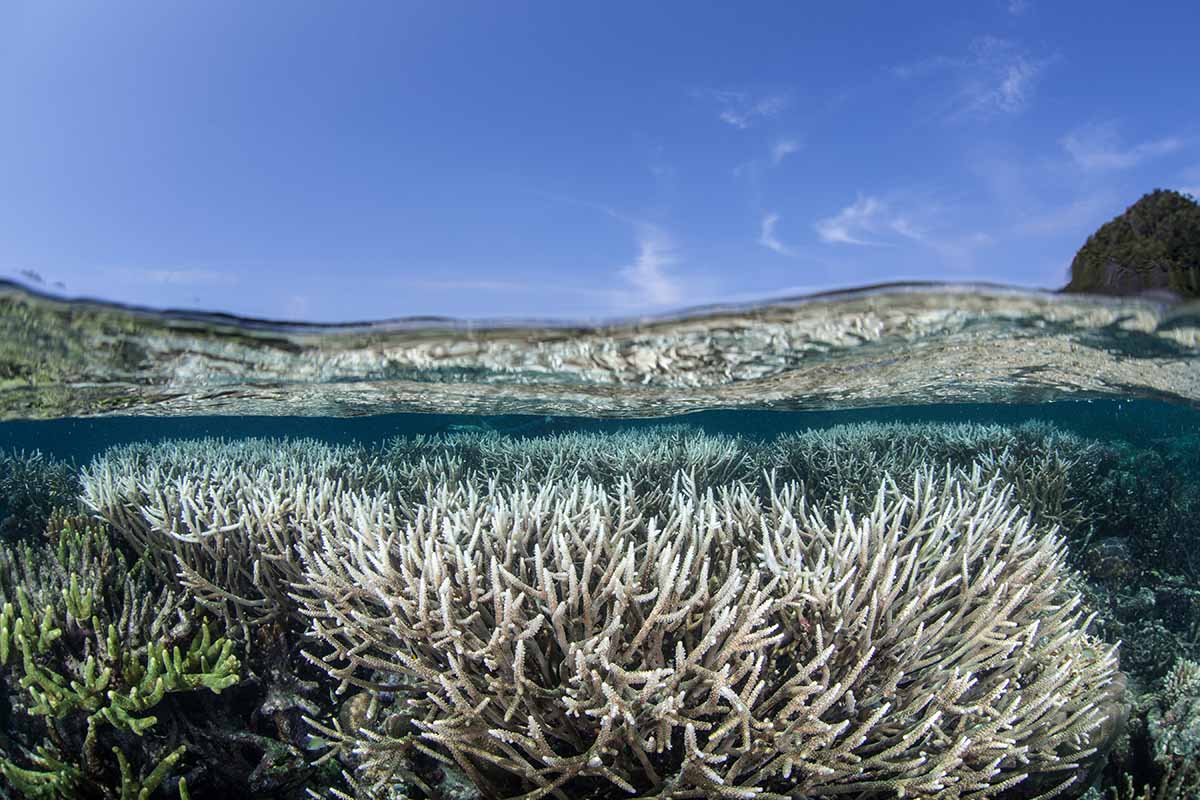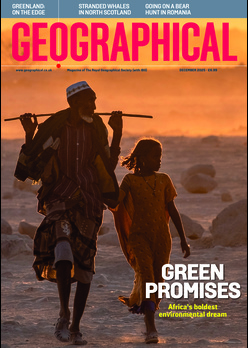
What’s really happening to coral reefs, and what are we doing to stop it?
By Lewis Hyden
What are coral reefs?
Coral reefs are large underwater structures composed of the skeletons of marine invertebrates called coral. Coral is a class of animal related hydroids, jellyfish, and sea anemones. They can be either ‘hard’ or ‘soft’. The basic structure of a reef is created by ‘hard’ or ‘stony’ corals which use calcium carbonate from seawater to create a durable exoskeleton that protects their soft bodies. Reefs gradually grow as individual corals (called polyps) create new exoskeletons, while also living on the skeletons that older and dead corals have left behind. Soft corals also form an essential component of the reef, offering protection and habitat for other species.
Large reefs most often form when corals grow in shallow, warm water where there is plenty of sunlight. Eventually a diverse ecosystem emerges made up of coral species and the myriad fish and fauna that inhabit them.
Threats to coral reefs
Today, coral reefs are shrinking and dying alarmingly quickly. According to the Status of Coral Reefs of the World 2020 report, 14 per cent of the world’s corals was lost between 2009 and 2018. Scientists warn that we may witness a 70 to 90 per cent decrease in live coral on reefs by 2050 without drastic action to limit global warming to 1.5°C. Even with concerted efforts, coral will be negatively impacted in years to come as global ocean temperatures could still take decades to stabilise even if global warming is reduced.
The main causes of coral death are coral bleaching, ocean acidification and human practices.
Coral Bleaching
Global warming and its effects have placed reefs under unprecedented stress in recent years. One of the most damaging effects of global warming on reefs is a phenomenon called ‘bleaching’.
Bleaching takes place when corals expel the vital algae they house and turn a ghostly pale. While some species of coral can catch plankton and similar small organisms in order to obtain their nutrients, the majority rely on algae called zooxanthellae. In a symbiotic relationship, these algae live within the coral’s tissue, providing energy via photosynthesis for both themselves and the coral polyps. In turn, the zooxanthellae are provided with a home and with plentiful carbon dioxide. It is the zooxanthellae that lend coral their lively colours — most coral polyp bodies are colourless without them.
When waters become too warm, corals become stressed and begin to expel zooxanthellae, leaking them of colour. Although the coral doesn’t die immediately, it becomes much harder for them to survive. Once gone, it’s difficult for the coral to absorb the zooxanthellae again, unless the water temperature cools back down. Mild bleaching can make corals more susceptible to disease while severe bleaching can kill them.

Ocean acidification
The rise of ocean acidity has also been troublesome for reefs. Oceans absorb a significant amount of carbon dioxide – best estimates suggest around two billion tonnes each year, or around 30 to 50 per cent of the CO2 produced by the burning of fossil fuels. This is a problem because seawater naturally reacts with this carbon dioxide to form carbonic acid, raising overall acidity levels. In the 200 years since the Industrial Revolution, the pH of surface ocean waters has fallen by 0.1 pH units, a change that represents approximately a 30 per cent increase in acidity.
Acidic water can have a detrimental affect on the calcium carbonate corals use to build their skeletons. Though usually readily available from the mineral-rich ocean bed, calcium carbonate can be corroded away by acidic waters, making it harder for corals to building their sturdy bone-like foundation.
Human practices
Humans also pose more direct threats to coral reefs through overfishing, water pollution, declining water quality and unsustainable coastal development.
Many corals reside within marine protected areas (MPAs) because the advanced ecosystems they form make them a valuable target for conservation efforts. MPAs help to protect reefs from practices such as coral poaching and dynamite fishing, which cause direct damage to the reefs. But despite more than 100 countries committing to protect more of our oceans, as part of a global goal to protect 30 per cent of nature by 2030, there is evidence to suggest that not all MPAs are sufficiently protected, making them vulnerable to unsustainable practices. A 2018 study found that roughly 59 per cent of European MPAs suffered ongoing damage from industrial fishing and trawling, which destroys the natural seafloor.
Coastal waters in Asia are particularly vulnerable to poaching – corals can be manufactured into valuables such as jewellery or used in medicines. In other areas destructive fishing practices can devastate the population of a particular species of fish, which can have a dramatic knock-on effect for the reef as a whole.

Protecting reefs
Coral reefs are important because of the biodiversity they sustain. Despite occupying less than one per cent of the ocean floor, the sheer volume of species that reefs support is immense. Scientists estimate that over a million species live in reefs across the world and that 25 per cent of all marine life, including over 4,000 species of fish, are dependent on coral reefs at some point in their life cycle. In addition, an estimated one billion people benefit from coral reefs, be it from the food they provide, coastal protection in the form of buffering from extreme weather conditions, or income from tourism and fisheries.
Projects are underway to help conserve and protect reefs. Some promising interventions include:
- Projects that identify corals with a better tolerance for heat – the spawn of these corals can then be captured and dispersed to fortify reefs
- Targeting invasive species known to significantly damage reefs – lionfish are particularly well-known for the damage they are causing to native coral reef ecosystems in the Atlantic, Gulf of Mexico, and Caribbean
- Growing corals in man-made nurseries that can then be used to repopulate damaged reefs
But despite these efforts one of the biggest threats to coral reefs remains global warming. It will therefore require a concerted international effort to stop the burning of fossil fuels to truly protect them.




